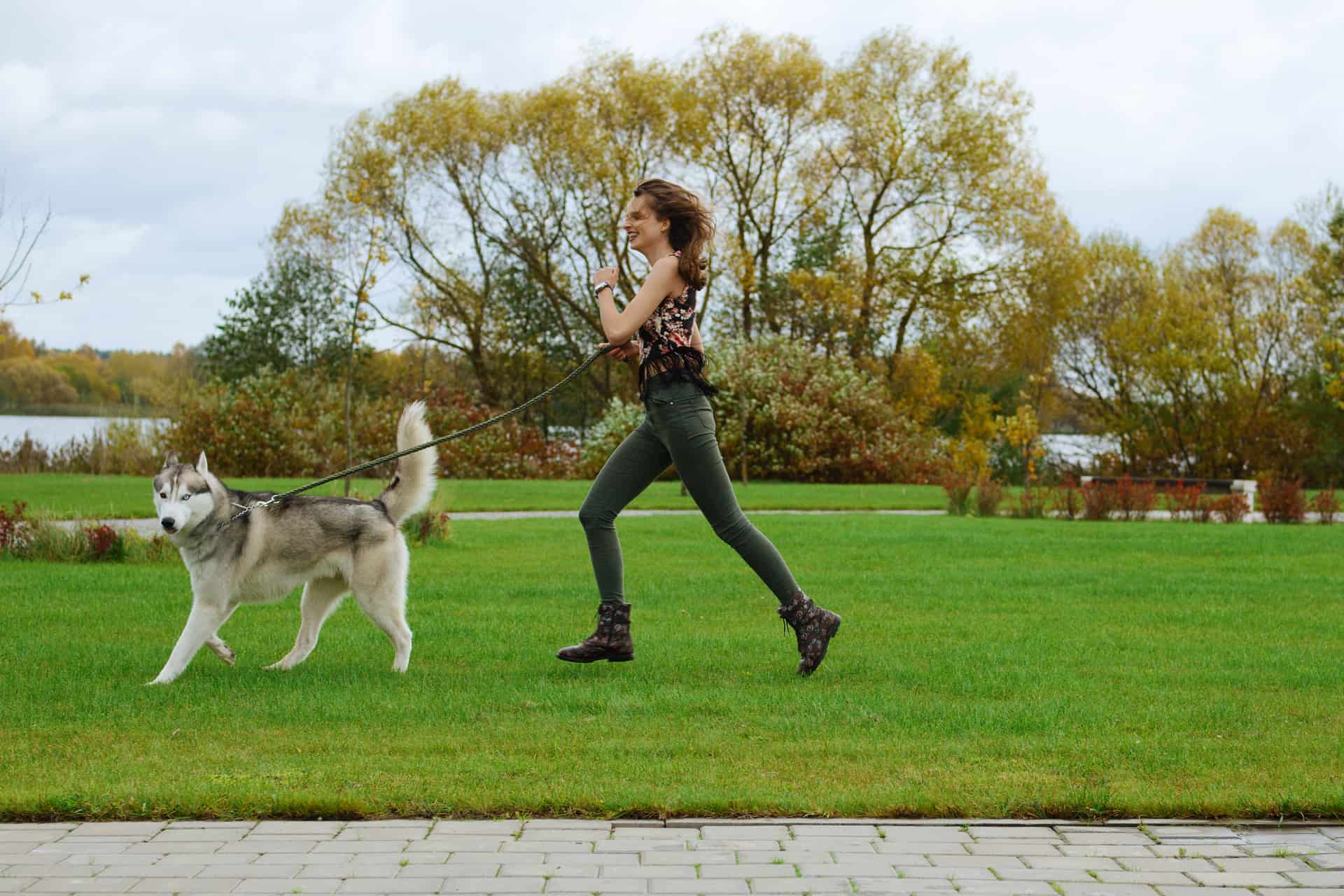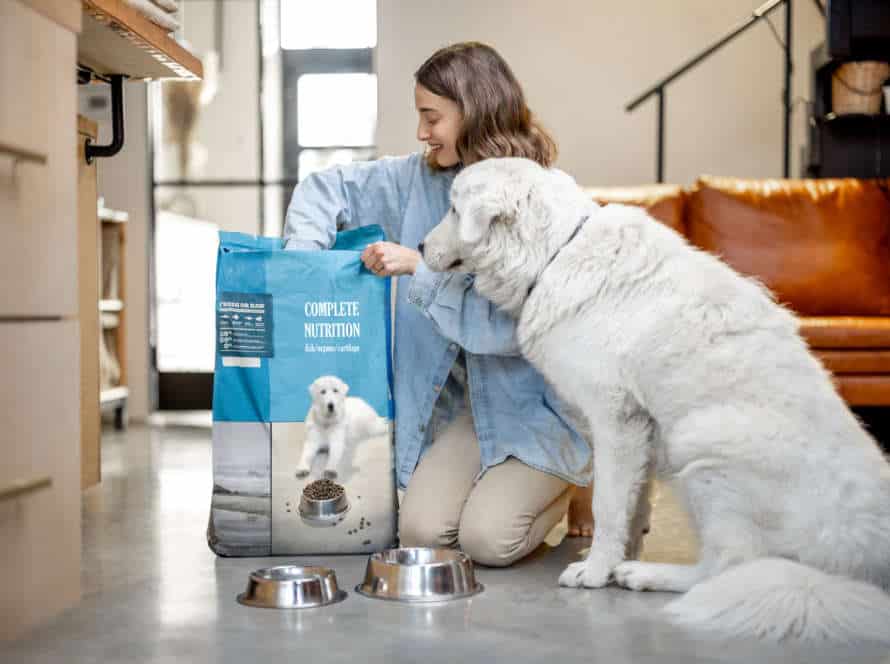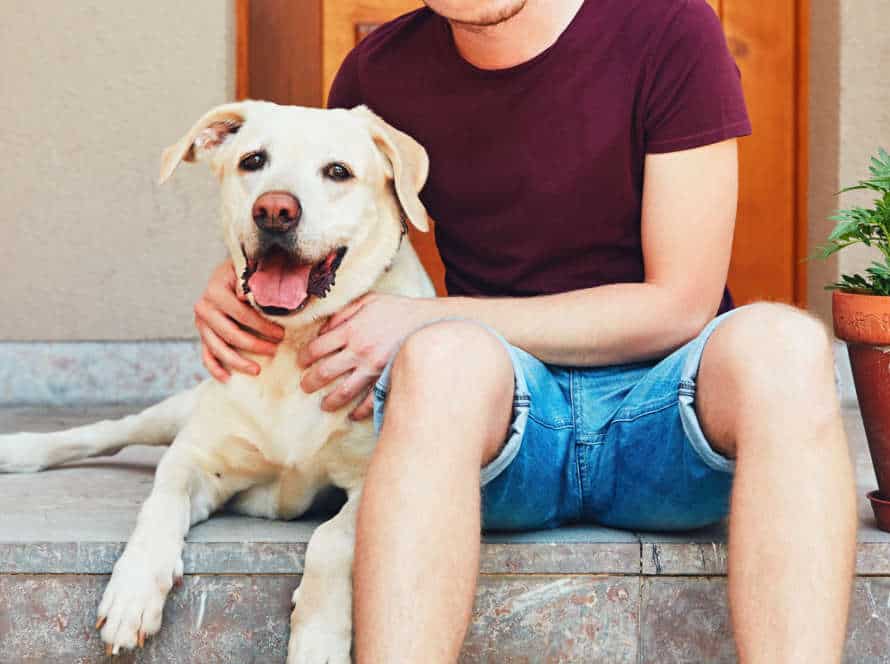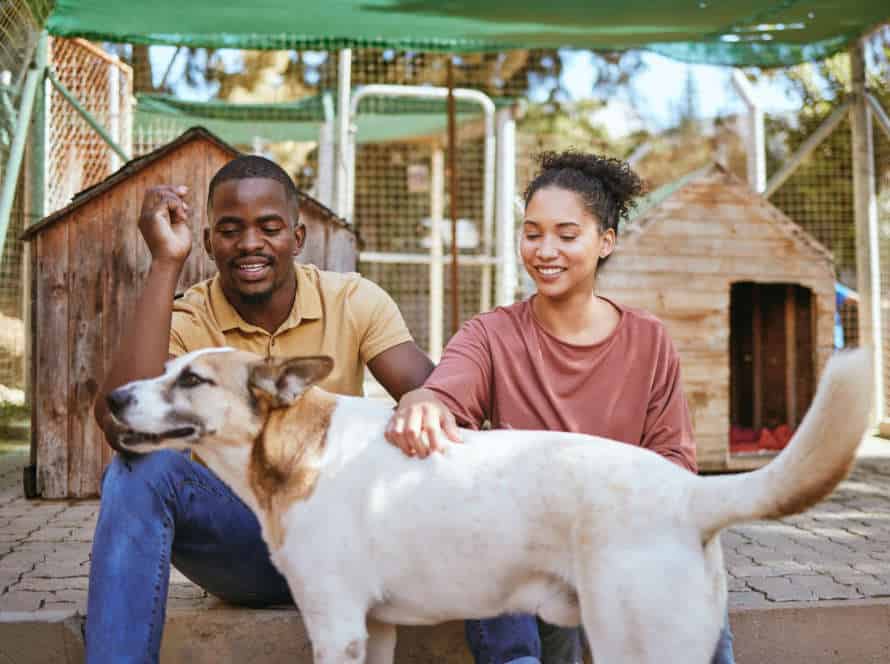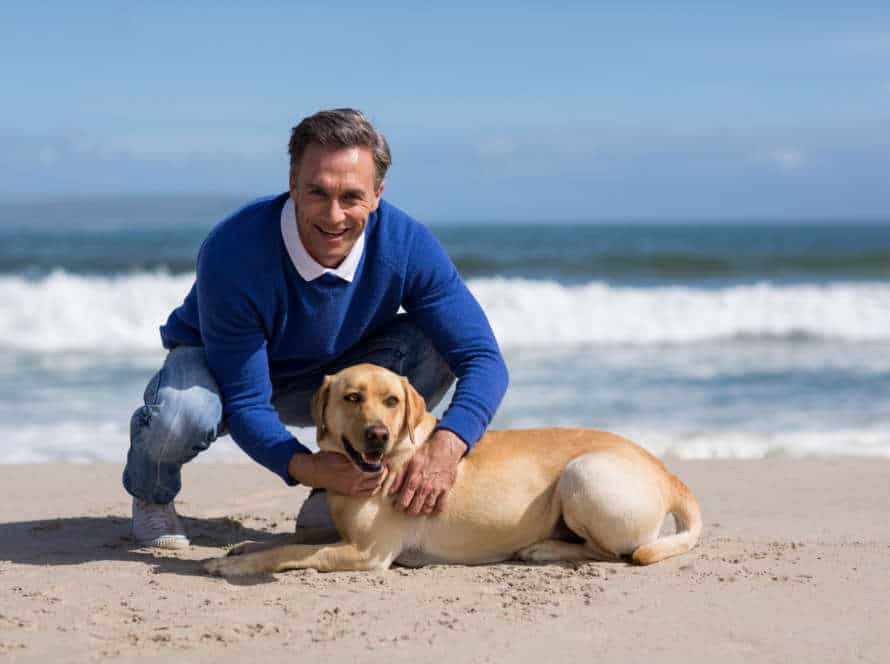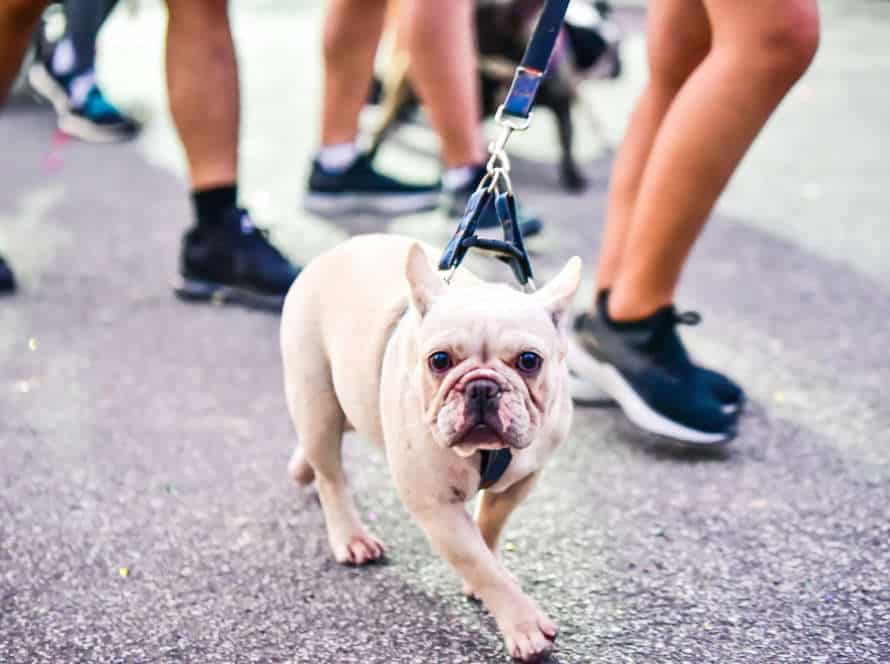Keep Your Adult Dog Happy and Healthy with Regular Exercise
Regular exercise is vital for your adult dog’s well-being. Here are some ideas to make sure your pooch gets enough activity:
- Find out your pet’s exercise needs based on age, breed, and size.
- Take your pup out for daily walks or runs, allowing regular breaks during strenuous activities.
- Encourage indoor activity, such as playing interactive games like fetch, tug-of-war, and hide-and-seek.
- Think about taking your doggy to a dog park to mingle and exercise with other canines.
- Give your pup toys that promote physical activity and mental stimulation, such as chew toys, treat puzzles, and agility equipment.
- Monitor your dog’s behavior and health regularly, and change the exercise routine as needed.
Regular exercise keeps your pup’s weight healthy, boosts its mood, and improves its life quality. So, give your furry pal a good workout – both of you will benefit!
Benefits of Regular Exercise for Dogs
It’s vital to exercise your adult dog regularly! No matter the breed or size,
- this helps keep them healthy and happy.
Exercise contributes to physical fitness, plus a healthy weight. It also enhances their mental health and offers physical, mental and emotional stimulation. Learn more about the advantages of regular exercise for your adult pup!
Physical Health Benefits
Physical exercise is key for your pup’s overall health and well-being. Same as humans, regular exercise has many benefits for dogs.
Here are the main physical health perks regular exercise provides:
- Maintains healthy weight: Exercise helps burn off extra calories and stop obesity, which can lead to other health issues.
- Stronger immune system: Regular exercise boosts your pup’s immune system, helping them fight off diseases or illnesses.
- Improves heart & lung health: Exercise strengthens the heart and lungs of dogs, improving their endurance and warding off cardiovascular diseases.
- Stronger muscles & bones: Exercises like running and jumping, help build muscle and bone strength.
- Better digestive system: Regular exercise increases digestion and bowel movement, avoiding constipation and other digestive disorders.
Pro tip: Talk to your vet to make an exercise plan that fits your pup’s needs based on breed, age, and health status.
Mental Health Benefits
Regular exercise offers lots of mental health benefits to adult dogs, just like it does for us humans. Here’s how:
- It can reduce stress and anxiety. Exercise releases endorphins and dopamine, which are natural mood-boosters. This can lower stress and anxiety in your dog.
- It can make your pup happier. Exercise helps to keep dogs mentally stimulated. This can lead to a better overall mood and lessen the risk of depression or boredom.
- It can help with better behaviour. Regular exercise can reduce destructive behaviour that can come from boredom or extra energy.
- It can help socialization. Walks or trips to the dog park can help dogs interact with other dogs and people. This can boost confidence and reduce fear or aggression.
Regular exercise is essential for your adult dog’s physical and mental health. Owners should make sure to include it in their pup’s daily routine.
Long-Term Health Benefits
Exercising regularly brings numerous long-term health benefits for adult dogs. It can help with weight management, reduce risk of diseases, and boost the immunity.
- Weight Management: Exercise helps dogs maintain healthy weight, reducing joint issues and heart disease.
- Cardiovascular Health: Exercise strengthens heart and blood vessels, improving circulation and cutting down cardiovascular disease risk.
- Immunity: Regular exercise has been shown to improve a dog’s immune system, lowering infections and illnesses.
- Chronic Disease: Exercise lessens the risk of chronic diseases like diabetes, cancer, and respiratory disease. It helps dogs lead longer, healthier lives.
Pro Tip: Talk to your vet. They’ll tell you the best exercise plan for your pup based on their age, breed, and health.”
Types of Exercise Suitable for Adult Dogs
Exercise is a must for adult dog happiness and wellness. It keeps their body in shape, plus promotes physical and mental fitness. There are lots of suitable types of exercise for adult dogs! From walking, running, and swimming, to agility courses, scent work, and tracking – every size, breed, and fitness level is covered. Here’s a quick look at the top types of exercise for adult dogs:
Walking
Walking is a must-have exercise for adult dogs. Pet owners should include it in their daily routine. Here’s why: it helps keep weight healthy, better heart health, and stimulates a dog’s mind and senses.
Depending on breed and age, you can vary the intensity and length of walks. Short and frequent ones are great for older dogs or those with joint problems or obesity. Longer, more intense ones are better for active breeds like retrievers and hounds.
Before starting, check with your vet to make sure your pet is fit for exercise.
Running
Running is a great exercise for adult dogs. It helps their fitness, mental health, and overall joy. Consider breed, age, and health before starting running though. Here are some other exercises for adult dogs:
- Walking – A daily brisk walk keeps your pup healthy and content.
- Swimming – Low-impact activity, ideal for dogs with joint problems.
- Hiking – Trails or off the beaten path, hiking is great for exercise and fresh air.
- Interactive play – Fetch and tug-of-war keeps their body and mind active.
Regular exercise is key to keeping obesity away, joint health up, and minds stimulated.
Swimming
Swimming is a great exercise for adult dogs! It can give many physical and mental benefits. It can improve their heart health, make their muscles stronger and help them relax and stay cool in hot weather. Here are some types of swimming exercises that are suitable for adult dogs:
- Pool Swimming: If you have a backyard pool, teach your dog to swim there. It helps build muscle and endurance.
- Lake or River Swimming: These places are great if your dog is an experienced swimmer and you have an appropriate location. It provides a good workout and can be a fun bonding activity.
- Hydrotherapy: This type of swimming exercise is great for dogs with arthritis or joint problems. It is performed in a pool with jets that create resistance in the water. This helps with mobility, flexibility and strength.
Regular swimming exercises help keep your dog healthy and improve their mood.
Creating a Regular Exercise Routine for Adult Dogs
Exercising your adult dog is vital. It helps keep their weight healthy, boosts their energy, and stimulates their mind. Walking, playing, and other activities can help your pup stay in shape. Make a regular exercise routine to make sure your adult dog stays happy and healthy. Here are some ideas for an effective and fun exercise routine for your adult dog:
Factors to Consider
Creating an exercise routine for an adult dog requires considering a few factors:
- Age – young dogs need more exercise than older ones.
- Breed – different breeds have different needs.
- Health – check with the vet if certain exercises are suitable.
- Environment – living space matters. Apartment? Dog park. Large yard? Fewer outings.
By considering these, you can create a routine that promotes physical and mental health.
How Much Exercise Should Adult Dogs Get?
Adult dogs need 30 minutes to two hours of exercise every day, depending on breed, age, and health. Here are some tips for a regular routine:
- Mix up the activity types – walking, running, fetching, swimming.
- Check your dog’s age, size, and ability before deciding how long and intense the exercise should be.
- Look up breed-specific exercise needs. E.g., Border Collies need more than Bulldogs.
- Keep an eye on your pup during and after exercise – make sure they don’t over or underdo it.
- Pro tip: Consistent exercise keeps your pup fit and stimulated. Result? A happy, healthy pet!
Finding the Right Exercise Balance
Creating the right exercise balance for your pup is key for their wellbeing. Consider their age, breed, size, and energy levels to make a workout routine that fits their individual needs. Here are some tips to help:
- Start off slow: Avoid injury or exhaustion. Begin with short, low-intensity walks or play.
- Mix it up: Keep your pup engaged by varying exercises such as walking, running, swimming, and fetch.
- Listen to cues: Pay attention to their behavior during and after. Slow down or stop if they show signs of fatigue or discomfort.
- Set a schedule: Dogs love routine. Make one that is consistent, and stick to it.
- Pro tip: Balance exercise with a healthy diet and regular vet check-ups for the best health and happiness.
Ways to Make Exercise Fun for Adult Dogs
Exercise is vital for dogs! It helps them stay in good health and spirits. Just like us humans, dogs need to move around often to stay fit, maintain a healthy weight, and live long and healthy lives. There are plenty of enjoyable ways to help adult dogs exercise, read on to learn how to get your pup moving and having a blast!
Incorporating Training and Play
Exercising regularly is key for keeping adult dogs mentally and physically fit. Training and play can make exercising fun for your pup. Here are some ideas:
- Fetch with a ball or frisbee
- Go on an adventure with a hike or walk in a new area
- Teach your pup new tricks
- Take your dog swimming or buy a kiddie pool
- Use puzzle toys or treat-dispensing toys to keep your pup busy
- Enroll your pup in agility or obedience courses
By keeping your dog active and engaged, you can help avoid behavioral issues and keep their body and mind healthy. Pro Tip: Always talk to your vet to make sure your pup’s exercise routine is suitable for their age, breed, and health condition.
Trying New Activities
Keep your adult dog happy, healthy and engaged through new activities! Here are some fun ways to get them exercising:
- Agility courses – a great way to keep your pup in shape, mentally stimulated and obedient.
- Swimming – a low-impact exercise perfect for dogs that need to shed a few pounds, have mobility issues or just love playing in the water.
- Hiking – explore new trails, sights and smells with your pup.
- Fetch – a full-body workout for your pup. Plus, it helps them improve their fetching skills and strengthens your bond.
New activities help your adult dog stay active, challenge them and bring you closer together.
Making Exercise an Enjoyable Experience
Exercise is key to keeping your adult dog fit and content. But, motivating them can be tough. Here are some fun ways to make exercise enjoyable for your pup:
- Change it up! Take them to different locations for walks or runs. Check out new trails, parks, and neighborhoods.
- Get a friend! Schedule playdates with other dogs for socialization and play.
- Toys! Introduce interactive toys like fetch or tug.
- Train! Obedience training is a great way to get your dog moving and focusing.
- Set goals! Aim to increase their activity level slowly, so they don’t get overwhelmed.
- Remember: Exercise helps both their physical and mental health. Pro Tip: Pick activities your dog loves so they look forward to exercising.
Tips for Staying Safe While Exercising with Adult Dogs
Exercising with your adult dog is essential for their health and joy. Walking and jogging can help maintain their vigor, agility, and well-being. But it is also key to be conscious of the risks. Here are some tips for exercising with your adult dog safely and securely:
Proper Hydration
Stay hydrated! That goes for both you and your adult pup. Here are some tips for exercising safely:
- Bring enough water for you both, plus a bowl for your pup.
- Give your pup water every 20 minutes.
- Don’t wait for them to tell you they’re thirsty.
- Look out for signs of dehydration like lethargy, dry gums, and sunken eyes.
- Exercise in cooler times or provide shade and rest.
Follow these tips to stay safe and healthy while exercising with your adult pup!
Watching for Signs of Exhaustion or Overexertion
It’s super important to be aware of exhaustion and overexertion signs in your adult pup, especially during exercise. Dogs are prone to overheating, dehydration, and exhaustion, so it’s key to stay on top of them while exercising.
Look out for these signs of exhaustion or overexertion:
- Heavy panting or breathing difficulties
- Excessive drooling
- Stumbling or staggering
- Uncontrollable shaking or tremors
- Loss of coordination or balance
If you spot any of these signs, stop right away. Give your pup some water and find a cool, shady area for them to rest. If they show no improvement, it’s best to consult a vet to check for any underlying health issues.
Pro Tip: Keep your dog hydrated and give them breaks often to avoid exhaustion or overexertion.
Safety While Engaging in Specific Activities.
Exercising with adult dogs can be a great way to bond. But safety is key. Here are some pointers:
- Warm-up & cool-down: Like us, dogs need to warm-up and cool-down. Start slow and increase intensity gradually. Allow your dog’s heart rate & breathing to return to normal at the end.
- Hydrate: Make sure your pup has enough water before, during, and after exercise.
- Use proper equipment: Use a comfortable harness or collar. Secure leash should fit your dog’s size & strength.
- Avoid extreme weather: Exercise during cooler hours of the day. On hot/cold days, try indoor exercises like obedience training or mental games.
- Know your dog’s limits: Recognize signs of exhaustion, overheating, or distress. Stop exercising immediately if any of these signs appear. Take breaks as needed & adjust intensity/duration based on your dog’s age, breed, & health.
Frequently Asked Questions
1. How much exercise does my adult dog need?
Answer: The amount of exercise needed depends on the breed, age, and health of your dog. A good rule of thumb is to aim for at least 30 minutes of moderate to intense exercise per day.
2. Can I just let my dog run around the backyard for exercise?
Answer: While running around the backyard can be good for your dog’s physical activity level, it doesn’t provide the mental stimulation that a structured walk or play session can. Mix up your dog’s exercise routine to include a variety of activities to keep them engaged and happy.
3. What are some good exercise options for my dog?
Answer: Walking, hiking, swimming, and playing fetch are all great options for exercise. Introducing your dog to new activities like agility training or canine sports can also be fun and challenging.
4. How can I tell if my dog is getting enough exercise?
Answer: A happy and healthy dog will display signs of being content, calm, and relaxed. If your dog has excess energy, destructive behaviors, or is overweight, it could be a sign that they need more exercise.
5. Is it okay to exercise my dog when it’s hot outside?
Answer: It’s important to take precautions when exercising your dog in hot weather. Avoid the hottest parts of the day and stick to shaded areas. Bring plenty of water and take frequent breaks to allow your dog to rest and cool off.
6. What if my dog has health issues that limit their ability to exercise?
Answer: Consult with your veterinarian to create a tailored exercise plan for your dog with health issues. Swimming or underwater treadmill therapy can be great low-impact exercise options for dogs with joint pain, while short, frequent walks may be best for dogs with heart or respiratory conditions.

